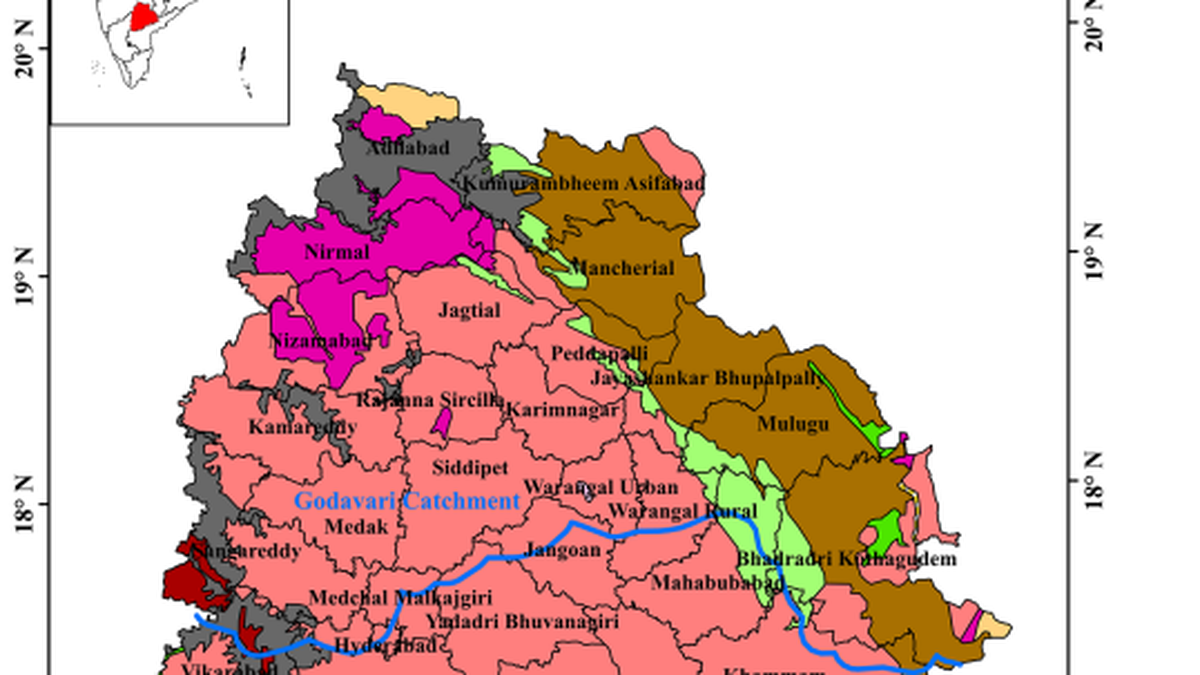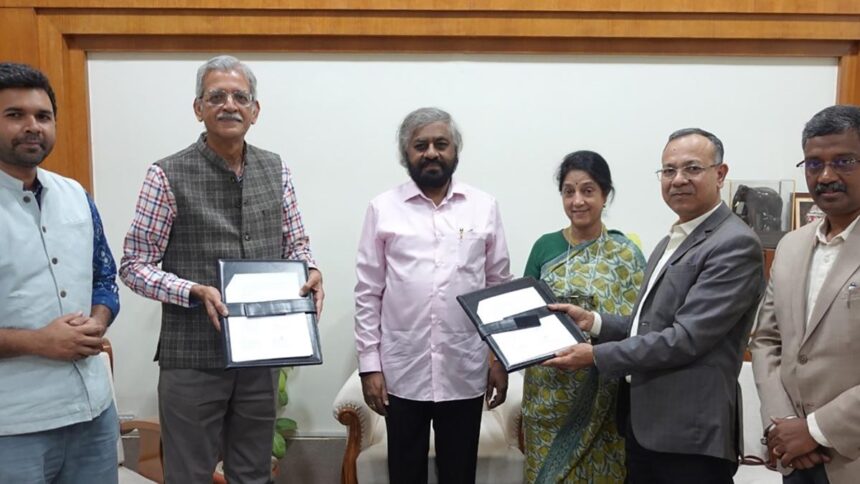
The map showing Telangana districts, catchment areas of Godavari and Krishna rivers
| Photo Credit: BY ARRANGEMENT
Climate change is likely to lead to precipitation levels increasing by 15% to 50% and temperatures rising up to 2.94 °C, impacting water availability and crop yields in Telangana. This is expected to increase the number of vulnerable people from 28% to 45% at the start of the [21st] century, and to 59% by mid-century. The potential rise in evaporation rates and depletion of freshwater resources pose a significant threat to the future of agriculture, which is relied upon by more than half the working population for livelihood, according to a study done by CSIR-National Geophysical Research Institute (NGRI) scientists.
The study done in Krishna (6,453,850 Ha) and Godavari (7,833,432 Ha) water basins — which divide Telangana into equal parts — for the near future (2015–2045), mid future (2046–2075), and far future (2076−2100), showed rise in temperature, most pronounced in minimum temperatures.
Evidence warranting change in farm practices
There is clear scientific evidence that farm practices need to be revised to adapt to the likely impact of climate change, because agriculture largely depends on monsoon rains, said director of the Jorhat (Assam)-based CSIR-North-East Institute of Science & Technology (NEIST), V.M. Tiwari.
A former NGRI director, Dr. Tiwari, and fellow scientists – Abhilash Kumar Paswan and Shakeel Ahmed – found that while rainfall may increase in the years ahead, it is expected to result in a more significant surge in surface runoff. Researchers used the Soil and Water Assessment Tool (SWAT) to assess the projected impact of climate change to simulate for 30 years (1985 to 2014), including a four-year warm-up period (1985 to 1988).
One more month of water flow
The monthly peak water flow is likely to undergo a shift, extending from July to November instead of the historical period of July to October, due to alterations in the monsoon pattern. The ratio of ‘evapotranspiration’ (transfer of water to atmosphere plus transpiration by plants) to precipitation (ET/PCP) indicates a 10% reduction by the end of the century due to increasing temperatures on vegetation.
It raises concerns about sustainability of water consuming crops like rice and cotton. Rice farming has surged recently, impacting the water balance and making the area more vulnerable to climate change. Expanding agricultural areas leads to increased water demand, posing a threat to hydrological balance.
Scientists suggest measures to combat crisis
Hence, scientists emphasized the urgency of adopting proactive measures to combat climate change like shifting to irrigating dry or rain fed crops, efficient use of surface and groundwater, recycling water, rainwater harvesting, etc., for water security.
Climate-resilient practices, such as crop rotation, cultivation of less water-intensive crops like millet/grain legumes and minimum support prices for alternative crops can incentivize diversification and encourage cultivation of crops better suited to changing environmental conditions.
Scientists called for farmers awareness programs on climate-resilient practices, constructing ponds and percolation tanks to capture water during monsoon to boost groundwater recharge and support agricultural activities. Academy of Scientific and Innovative Research (AcSIR), Ghaziabad, and Islamic University of Science and Technology, Awantipora (J&K), were part of the study.
Published – August 22, 2025 05:58 pm IST




















